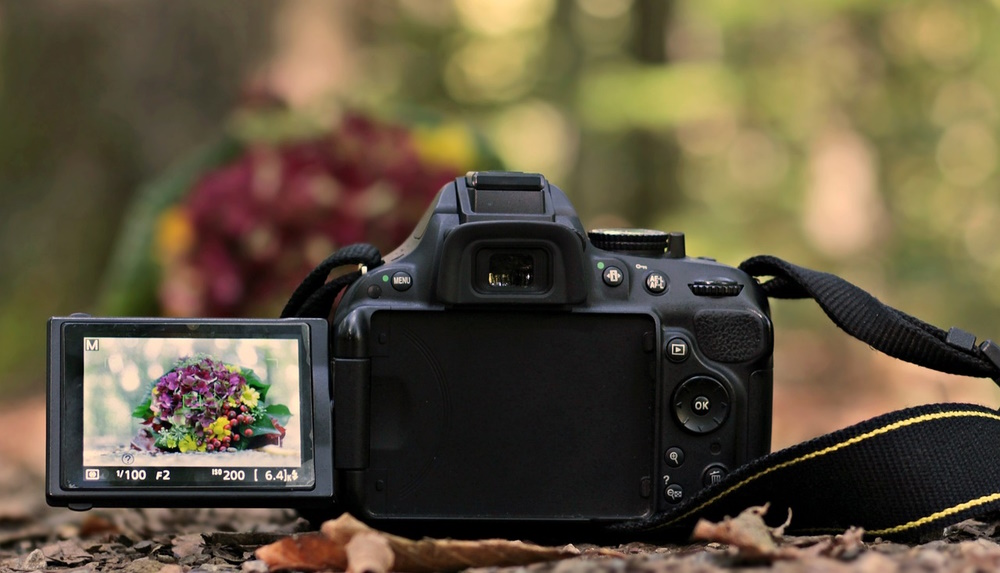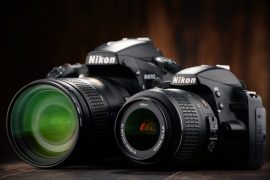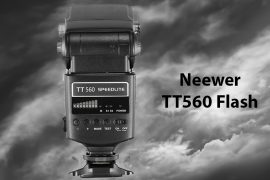Product photography is a form of commercial photography that aims to present a product in the best possible photographic representation. These images are meant to entice shoppers to purchase the photographed products by featuring product details and features, supplemental to written copy and product descriptions.
There are different types of product photography such as white background photos, contextual shots that feature products in use, and lifestyle shots that show the product in a real-life setting.
- White background photos are the ones you see on e-commerce marketplaces like Amazon, AliExpress, and eBay. Also noted as individual product photos (though sometimes white background shots feature multiple images). This is arguably the most common product photo type you’ll see.
- Contextual shots feature products in use. These types of photos are ideal because they show shoppers how to use the products in their own lives, and it also gives them a sense of scale. People can imagine themselves using the product when they have these types of photos.
- Lifestyle shots show the product in a real-life setting. There’s a lot of crossover between contextual and lifestyle product photography. These shots give potential buyers an idea of how the product would fit into their daily lives.
In conclusion, product photography is an essential part of any business selling goods. It helps to entice shoppers to purchase the photographed products by featuring product details and features in an attractive manner.
Role of Camera in product photography
The camera is one of the most important pieces of equipment in product photography. It is the tool that captures the image of the product, allowing you to showcase its details and features in an attractive manner.
A good camera for product photography should have a high megapixel count to capture sharp and detailed images, and the ability to attach an interchangeable lens for greater flexibility in framing and composition.
A full-frame format is preferred for its larger sensor size and better image quality, but if you are on a tight budget, you can start with an APS-C camera and upgrade later on. The right camera can help you capture stunning product images that entice shoppers to purchase the photographed products.
Factors to Consider When Choosing a Camera for Product Photography
When choosing a camera for product photography, there are several factors to consider to ensure that you capture high-quality images that showcase the details and features of the products being photographed. Here are some factors to consider when choosing a camera for product photography:
Essential factors
- Megapixel count: A high megapixel count is important for capturing sharp and detailed images. Look for a camera with at least 24 megapixels.
- Sensor Size and Image Quality: The size of the camera’s sensor plays a crucial role in determining the image quality. A larger sensor can capture more light and produce images with less noise and a better dynamic range. A full-frame sensor is preferred for its larger size and better image quality, but if you are on a tight budget, you can start with an APS-C sensor and upgrade later on.
- Lens Compatibility and Focal Length: The ability to attach an interchangeable lens gives you greater flexibility in framing and composition. Look for a camera with a lens mount that is compatible with a wide range of lenses. The focal length of the lens determines the angle of view and magnification of the image. A macro lens or a standard lens with an extension tube is ideal for capturing close-up shots of products.
- Budget: Consider your budget when choosing a camera for product photography. While more expensive cameras often have better features and image quality, there are many affordable options that can still produce high-quality images.
Optional factors
- Manual Controls and Custom Settings: Manual controls allow you to adjust the camera settings to achieve the desired exposure and depth of field. Look for a camera with manual controls for aperture, shutter speed, and ISO. Custom settings allow you to save frequently used settings for quick access.
- Tethering Capability: Tethering allows you to connect your camera to a computer and view and transfer images in real time. This can be useful for checking focus and composition on a larger screen while shooting. Look for a camera with tethering capability.
Table of content
Top Cameras for Product Photography
-
- Panasonic LUMIX FZ80
- Olympus OM-D E-M10 Mark IV
- Sony Alpha A6100
- Fujifilm X-S10
-
- Canon EOS 90D
- Nikon D7500
- Sony RX100 VII
- Canon EOS 6D Mark II
-
- Nikon D850
- Sony a7R IV
- Fujifilm GFX 50S II
- Canon EOS 5DS

Photo by Depositphos
Top Cameras for Product Photography
1. for beginners
Olympus OM-D E-M10 Mark IV
With its compact and highly portable E-M10 design, the silver OM-D E-M10 Mark IV combines many of Olympus’s flagship features and technologies. It incorporates a 20.3MP Micro Four Thirds sensor and TruePic VIII image processor, which enables UHD 4K video recording, a fast 8.7 fps continuous shooting rate, and a wide ISO 200-25600 sensitivity range to adapt to various lighting conditions.
The sensor also uses a 121-point contrast-detection AF system that employs subject detection algorithms from the E-M1 series for quick, precise, and intelligent focusing performance.
Additionally, the camera features 5-axis sensor-shift image stabilization, which compensates for approximately 4.5 stops of camera shake for sharper handheld shooting.
Despite its impressively svelte design, the E-M10 Mark IV is equipped with a large 3.0″ 1.04m-dot touchscreen LCD that can tilt up to 180° for working from high, low, and front-facing angles. For eye-level viewing, there is a 2.36m-dot OLED electronic viewfinder. Furthermore, built-in Wi-Fi and Bluetooth allow the camera to connect to a smartphone or tablet for direct wireless sharing of images or remote camera control from the mobile device.
Sony Alpha A6100
The Sony A6100 is a mirrorless interchangeable lens camera that was released in 2019. It features a 24.2-megapixel APS-C Exmor CMOS sensor and a BIONZ X image processor, which enables it to shoot at a high ISO sensitivity range of 100-32000.
The camera is also capable of shooting continuous burst photos at up to 11 frames per second with autofocus and auto exposure tracking.
The A6100 features 425 phase-detection autofocus points that cover approximately 84% of the image area, providing accurate and quick focusing performance. It also includes Real-time Eye AF and Real-time Tracking capabilities that use AI-based technology to track subjects with high precision.
In terms of video recording, the A6100 is capable of recording 4K UHD footage at up to 30 frames per second and Full HD footage at up to 120 frames per second for slow-motion playback. The camera also features a 180-degree tilting touchscreen LCD, making it ideal for vlogging and selfie-taking.
Other notable features of the Sony A6100 include built-in Wi-Fi and Bluetooth connectivity, allowing for easy image sharing and remote camera control using a smartphone or tablet. Overall, the A6100 is a versatile and compact camera that is suitable for both photography and videography.
Fujifilm X-S10
The Fujifilm X-S10 is a mirrorless interchangeable lens camera that was released in 2020. It features a 26.1-megapixel X-Trans CMOS 4 sensor and X-Processor 4 image processing engine, providing a high ISO sensitivity range of 160-12800.
The camera has a hybrid autofocus system that utilizes 425 phase-detection autofocus points and a contrast-detection autofocus system, providing fast and accurate autofocus performance. It also includes face and eye detection autofocus, as well as subject tracking, making it easy to capture fast-moving subjects.
The X-S10 is capable of shooting continuous burst photos at up to 8 frames per second with autofocus and auto-exposure tracking. It can also record 4K UHD video at up to 30 frames per second, as well as Full HD video at up to 240 frames per second for slow-motion playback.
One of the standout features of the X-S10 is its in-body image stabilization system, which compensates for camera shake up to 6 stops. This makes it easier to shoot handheld in low light or when using longer lenses.
The camera also includes a 3.0-inch vari-angle LCD touchscreen, making it easy to shoot from different angles, as well as built-in Wi-Fi and Bluetooth connectivity for easy image sharing and remote camera control via a smartphone or tablet.
-
for intermediate photographers:
Nikon D7500
The Nikon D7500 is a DSLR camera that was released in 2017. It features a 20.9-megapixel DX-format CMOS sensor and an EXPEED 5 image processor, providing a high ISO sensitivity range of 100-51200.
The camera has a 51-point autofocus system, which includes 15 cross-type sensors for improved accuracy and subject tracking. It also includes Group-Area AF mode, which uses a group of autofocus points to track a subject and maintain focus even when the subject moves around the frame.
The D7500 is capable of shooting continuous burst photos at up to 8 frames per second with autofocus and auto-exposure tracking. It also includes 4K UHD video recording at up to 30 frames per second and Full HD video recording at up to 60 frames per second.
Other notable features of the D7500 include a tilting 3.2-inch touchscreen LCD, built-in Wi-Fi and Bluetooth connectivity for easy image sharing and remote camera control via a smartphone or tablet, and a weather-sealed body for protection against dust and moisture.
The camera also includes a variety of creative modes and filters, as well as in-camera time-lapse recording and interval timer shooting, making it a versatile option for photographers looking to experiment with different styles of photography.
Sony RX100 VII
The Sony RX100 VII is a compact digital camera released in 2019, and it is a part of the popular RX100 series of cameras. It features a 20.1-megapixel 1.0-inch Exmor RS stacked CMOS sensor, along with a BIONZ X image processor that delivers high-quality images and fast performance.
The camera has a 24-200mm f/2.8-4.5 zoom lens, which provides a versatile focal range suitable for a wide range of photography styles, including landscapes, portraits, and even wildlife. It also has a fast hybrid autofocus system that combines 357 phase-detection points and 425 contrast-detection points to achieve precise focus in just 0.02 seconds.
The RX100 VII is capable of shooting continuous burst photos at up to 20 frames per second with autofocus and auto exposure tracking. It can also record 4K UHD video at up to 30 frames per second and Full HD video at up to 120 frames per second for slow-motion playback.
One of the standout features of the RX100 VII is its Real-time Eye AF and Real-time Tracking capabilities. These features use advanced algorithms to detect and track subjects’ eyes and movements, ensuring sharp and accurate focus even when the subject is moving around the frame.
The camera also includes a 3.0-inch tilting touchscreen LCD, a pop-up electronic viewfinder, and built-in Wi-Fi and Bluetooth connectivity for easy image sharing, and remote camera control via a smartphone or tablet.
Canon EOS 6D Mark II
The Canon EOS 6D Mark II is a full-frame DSLR camera that was released in 2017 as an update to the original Canon EOS 6D. It features a 26.2-megapixel CMOS sensor and DIGIC 7 image processor, providing a high ISO sensitivity range of 100-40000.
The camera has a 45-point all-cross-type autofocus system, which includes 27 f/8-compatible AF points for improved accuracy and subject tracking. It also includes Dual Pixel CMOS AF technology, which enables fast and precise autofocus during live view and video recording.
The 6D Mark II is capable of shooting continuous burst photos at up to 6.5 frames per second with autofocus and auto-exposure tracking. It also includes Full HD video recording at up to 60 frames per second and in-camera time-lapse recording and interval timer shooting.
Other notable features of the 6D Mark II include a vari-angle 3.0-inch touchscreen LCD, built-in Wi-Fi, NFC, and Bluetooth connectivity for easy image sharing and remote camera control via a smartphone or tablet, and a weather-sealed body for protection against dust and moisture.
The camera also includes a range of creative filters and effects, as well as in-camera HDR and multiple exposure shooting modes, making it a versatile option for photographers looking to experiment with different styles of photography.
Canon EOS 90D
The Canon EOS 90D is a versatile DSLR camera released in 2019, featuring a 32.5-megapixel APS-C CMOS sensor and DIGIC 8 image processor. The camera is designed for both still photography and video recording, making it a great option for a wide range of photographers.
The camera has a 45-point all-cross-type autofocus system that provides fast and accurate focusing, even in low-light conditions. It also includes Dual Pixel CMOS AF technology, which enables fast and precise autofocus during live view and video recording.
The 90D is capable of shooting continuous burst photos at up to 10 frames per second with autofocus and auto exposure tracking. It can also record 4K UHD video at up to 30 frames per second and Full HD video at up to 120 frames per second for slow-motion playback.
Other notable features of the 90D include a vari-angle 3.0-inch touchscreen LCD, built-in Wi-Fi and Bluetooth connectivity for easy image sharing and remote camera control via a smartphone or tablet, and a weather-sealed body for protection against dust and moisture.
The camera also includes a range of creative filters and effects, as well as in-camera HDR and multiple exposure shooting modes, making it a versatile option for photographers looking to experiment with different styles of photography.
-
for professional photographers:
Nikon D850
The Nikon D850 is a professional-level DSLR camera that was released in 2017. It features a full-frame 45.7 megapixel CMOS sensor and Nikon’s EXPEED 5 image processing engine, which enables fast autofocus and continuous shooting at up to 7 frames per second with full AF and AE tracking.
The camera has a 153-point autofocus system with real-time Eye AF, making it well-suited for portrait and wildlife photography. It also includes 4K UHD video recording at up to 30 frames per second, and Full HD video at up to 120 frames per second for slow-motion footage.
The D850 has a weather-sealed magnesium alloy body and includes a 3.2-inch tilting LCD touchscreen display with 2.36 million dots for reviewing and composing images. It also has a large optical viewfinder with 0.75x magnification.
Other features of the D850 include a built-in time-lapse feature, a 7-stop effective dynamic range for high-contrast scenes, and a silent shooting mode for quiet operation.
The Nikon D850 has tethering capability, which allows the camera to be connected to a computer or other device for remote control and image transfer. The camera includes both USB 3.0 and Wi-Fi connectivity options for tethering, which can be used with Nikon’s optional Camera Control Pro 2 software or third-party tethering software. This feature is useful for studio and commercial photographers who need to review and control their images in real time while shooting.
The Nikon D850 has tethering capability, which allows the camera to be connected to a computer or other device for remote control and image transfer. The camera includes both USB 3.0 and Wi-Fi connectivity options for tethering.
Sony a7R IV
The Sony a7R IV is a full-frame mirrorless camera that was released in 2019. It features a 61-megapixel back-illuminated Exmor R CMOS sensor, which is currently one of the highest-resolution sensors available in a full-frame camera. The camera also includes Sony’s BIONZ X image processing engine, which enables fast autofocus and continuous shooting at up to 10 frames per second.
The a7R IV has a 567-point phase detection autofocus system with real-time Eye AF for both humans and animals, making it well-suited for portrait and wildlife photography. It also includes 4K video recording at up to 30 frames per second, and Full HD video at up to 120 frames per second for slow-motion footage.
The camera body is constructed with a magnesium alloy body and is weather-sealed for durability and protection against the elements. It includes a 5.76 million dot OLED electronic viewfinder and a 3-inch tilting LCD touchscreen.
Other features of the a7R IV include a built-in 5-axis image stabilization system, dual UHS-II SD card slots, and a USB Type-C port for charging and data transfer.
The camera includes both USB 3.2 and Wi-Fi connectivity options for tethering.
Fujifilm GFX 50S
The Fujifilm GFX 50S II is a medium-format mirrorless camera that was released in 2021. It features a 51.4-megapixel medium format CMOS sensor, which is larger than the full-frame sensors typically found in DSLRs and mirrorless cameras. The sensor size allows for greater dynamic range and detail in images.
The camera also includes Fujifilm’s X-Processor 4 image processing engine, which enables fast autofocus and continuous shooting at up to 3 frames per second. The GFX 50S II has a 117-point autofocus system and includes features such as face and eye detection.
In terms of video, the GFX 50S II can shoot 1080p video at up to 30 frames per second, but it does not support 4K recording. It includes a built-in intervalometer for time-lapse photography.
The camera body is constructed with a magnesium alloy body and is weather-sealed for durability and protection against the elements. It includes a 3.69 million dot electronic viewfinder and a 3.2-inch tilting LCD screen.
The camera includes both USB Type-C and Wi-Fi connectivity options for tethering, which can be used with Fujifilm’s optional Tether Shooting Plug-in PRO software or third-party tethering software.
Canon EOS 5DS
The Canon EOS 5DS is a professional-level DSLR camera that was released in 2015. It features a full-frame 50.6 megapixel CMOS sensor, which is currently one of the highest-resolution sensors available in a DSLR. The camera also includes dual DIGIC 6 processors, a 61-point autofocus system, and a 150,000-pixel RGB+IR metering sensor.
In terms of video, the EOS 5DS can shoot 1080p video at 30 frames per second, but it does not support 4K recording. It also includes a built-in intervalometer for time-lapse photography.
The camera body is constructed with a magnesium alloy body and is weather-sealed for durability and protection against the elements. It includes a 3.2-inch LCD display with 1.04 million dots for reviewing and composing images and has a maximum shutter speed of 1/8000th of a second.
The camera includes both USB 3.0 and HDMI connectivity options for tethering, which can be used with Canon’s optional EOS Utility software or third-party tethering software.
-
Final Conclusion
Here are the DXO score of the camera sensor and the overall scores for each of the cameras mentioned above:
| Camer name | Sensor DXOmark (%) | Overall (1-10) | ||
|---|---|---|---|---|
| Olympus OM-D E-M10 Mark IV | 84 | 9 | ||
| Sony Alpha A6100 | 83 | 8.5 | ||
| Fujifilm X-S10 | 84 | 9 | ||
| Canon EOS 90D | 88 | 9.5 | ||
| Nikon D7500 | 86 | 8 | ||
| Sony RX100 VII | 63 | 8.5 | ||
| Canon EOS 6D Mark II | 85 | 9 | ||
| Nikon D850 | 100 | 9.5 | ||
| Sony a7R IV | 99 | 9.5 | ||
| Fujifilm GFX 50S II | 98 | 9 | ||
| Canon EOS 5DS | 87 | 9 |
Remarks
- Note that DxOMark scores are based solely on sensor performance and do not take into account other factors that may be important for product photography, such as autofocus speed and accuracy, image stabilization, and other features.
- Note that the overall scores are based on a comparison of the cameras’ features and specifications, and do not take into account individual photographers’ preferences and shooting styles.
Based on the evaluation scores we gathered, here’s a summary of the best cameras for product photography for each level of photographer:
For beginner photographers:
- The Sony Alpha A6100 is our recommended camera, with The Olympus OM-D E-M10 Mark IV and Fujifilm X-S10 also good options.
For intermediate photographers:
- The Canon EOS 90D and Canon EOS 6D Mark II both have high overall scores and DxOMark sensor scores, making them good options. Nikon D7500 and Sony RX100 VII are good alternatives.
For professional photographers:
- The Sony a7R IV, Nikon D850, and Fujifilm GFX 50S II are all excellent options with very high overall scores and DxOMark sensor scores.
- The Canon EOS 5DS is also a good option with a high DxOMark sensor score, although its overall score is lower than the other professional-level cameras.
Related posts
Product Photography Tips And Tricks
Best Camera Lens For Product Photography
Thanks for reading, I hope you enjoyed the article, in case you have any questions just drop them below & I will be happy to answer you.
The featured Image by NoName_13 from Pixabay
If you enjoy the site, don’t forget to subscribe, we will only inform you when a new article is posted.





















Anyone who has done product photography or is closely associated with product photography knows how important it is to choose a befitting camera and that is what makes this article very crucial and timely as well. I once worked with a small brand and the marketing team had to put in so much effort in the product photography. Such a World class piece
Thank you for sharing your experience with product photography. I’m glad to hear that you found the article helpful.
Thank you for this article on the best cameras for product photography Amin. I have been reading you articles for a while and have gotten many great and helpful tips from them but this one is right in my wheelhouse as I photograph very small products as part of my job and can not thank you enough!
I have always shot my photos with a white or other solid background so I really appreciated you explaining the other forms of product photography like contextual and lifestyle shots that I hope to work into my own product photo galleries.
The Sony A6100 seems like the perfect all-around camera for my applications. Can you tell me any glaring negatives about that specific camera?
Thank you for your kind words about my article on the best cameras for product photography. I’m glad to hear that you found it helpful and that it’s relevant to your work. The Sony A6100 is a great all-around camera for product photography, but like any camera, it has its limitations. One potential negative is that it doesn’t have in-body image stabilization, which can be a drawback for handheld shooting in low light. However, it’s still a highly capable camera that can produce excellent results.